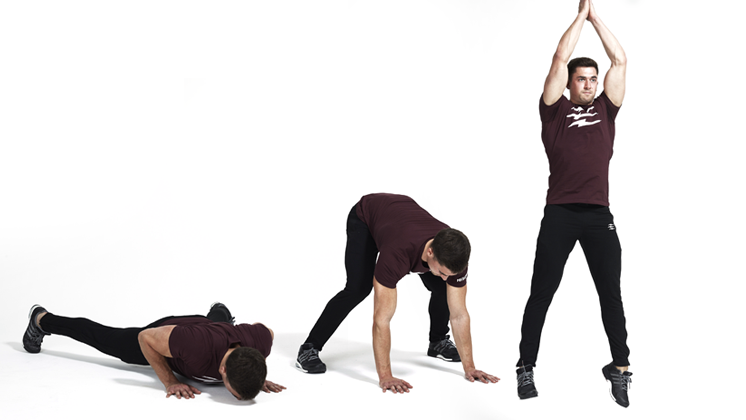How to Work Every Muscle in One Move
Get your back in action with the blurpee – the best back-builder that doesn’t require a bar

Traditionally, the problem with going completely kit-free is behind you. Without anything to pull on, it’s difficult to engage the bigger muscles of the back, making for muscular imbalances and aggravating your already-probably-quite-serious nine-to-five hunch. The solution? The blurpee.
This beastly variation on the burpee was created by productivity guru Tim Ferriss, author of New York Times bestseller The 4-Hour Body - a self-proclaimed guide on how to ‘hack’ your body. Other tips in the book include advice on remaining productive on minimal sleep, building muscle quickly, and boosting testosterone.
This upgrade on the traditional burpee uses wider foot-placement to force you to pull yourself forward into the jump part of the move – activating the lats (hence the “L” in the name) alongside virtually every other muscle. It isn’t easy, but as Theodore Roosevelt almost certainly once said, nothing worthwhile ever is.
The burpee already has a reputation as one of the more unpleasant exercises you can do, and with good reason. The quick transition from standing to squatting to a push-up to jumping means various muscle groups are being used, and with this variation, you can add your lats to the areas that are getting a hard-hitting workout.
How to do it
- Get into a wide-legged straddle position, feet as wide apart as they can comfortably go.
- Put your hands on the floor and hop your legs back, then drop into a strict press-up (chest touches the floor, thighs don’t).
- At the top of the move, use your arms to “pull” your body back towards your hands as you jump to your feet.
- Jump up and land back in your straddle position.
- Repeat as necessary/tolerable. Do as many reps as possible in five minutes.
Get the Coach Newsletter
Sign up for workout ideas, training advice, reviews of the latest gear and more.
Coach is a health and fitness title. This byline is used for posting sponsored content, book extracts and the like. It is also used as a placeholder for articles published a long time ago when the original author is unclear. You can find out more about this publication and find the contact details of the editorial team on the About Us page.

